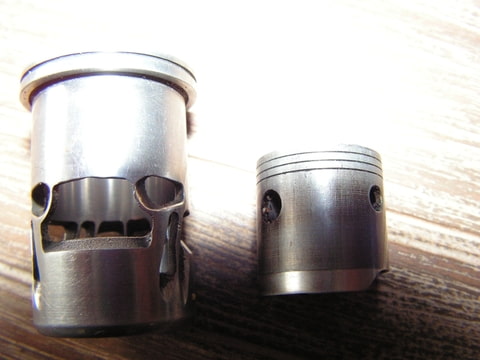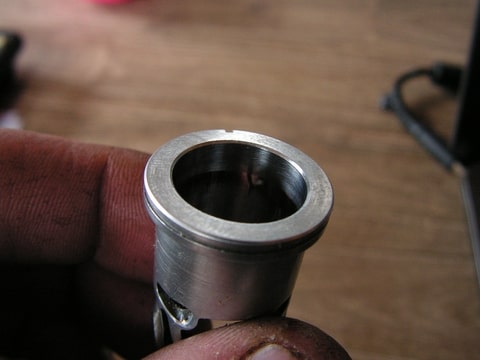Hello friends,
Like other said before.....The cilinder is a little bit conisch. That is for the compression. When a motor is new , it is almost possible to turn him around. You need to heat him up with a heat gun before starting!!! Then you may start & good running in!!! Very rich mixture!!
When the running in is done , you still feel that he wil blocked on the top dead center. Ok,a little bit. When the motor is warm , you don't feel that anymore.
In competition the motor have a life for about 8 - 12 hours.
Here a picture from a Novarossi 3.5cc kit. You see the oil grooves in the piston. This kit was tune by JP in France.
And here I try to take a picture from the inside of the cilinder. The shiny spot that you can see was the TDC of the piston. Not more for use anymore.
By the way , this is not a ABC kit , but a AAC kit. so the cilinder is from aluminium. Supergood , superfast & very high RPM's , but the exhaust port will be very hot & the cilinder is not more round , but more the form like a "EGG"....
I hope you understand it a little & sorry for my bad english writing

.






